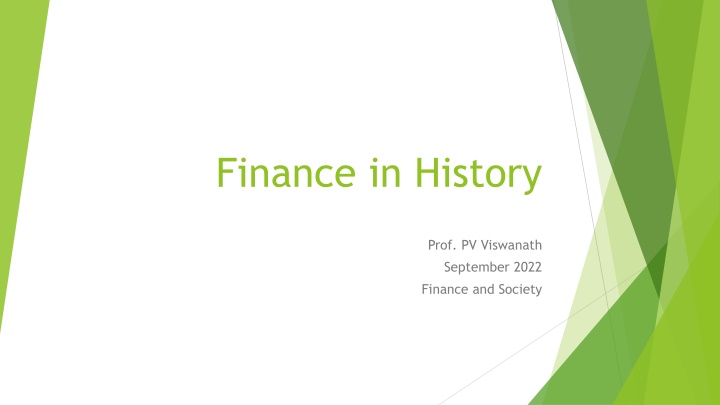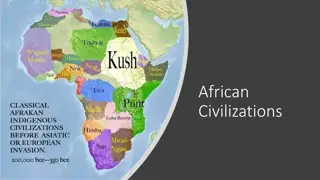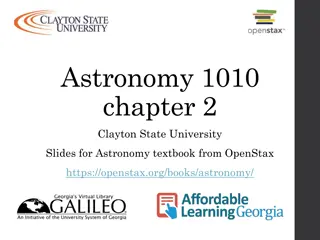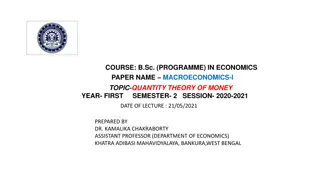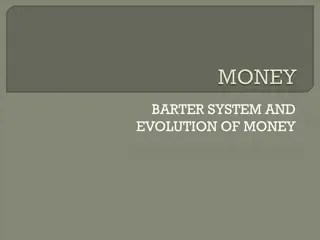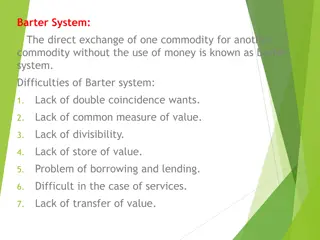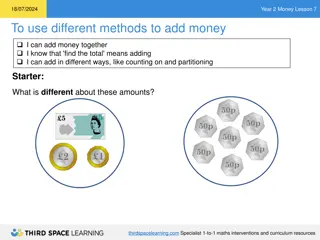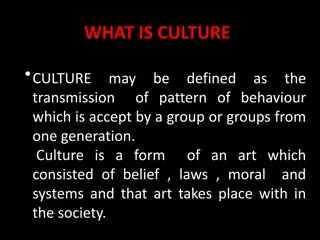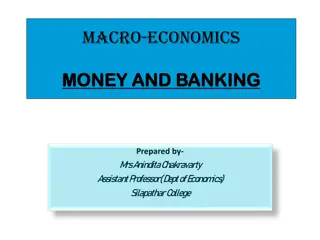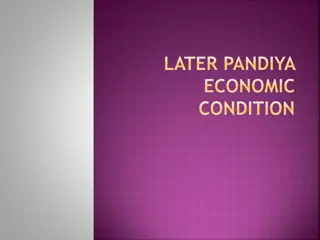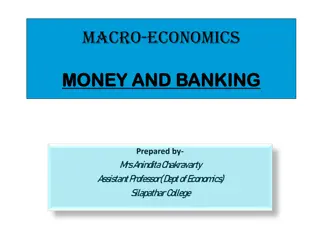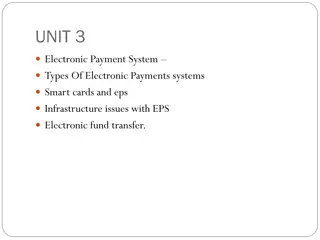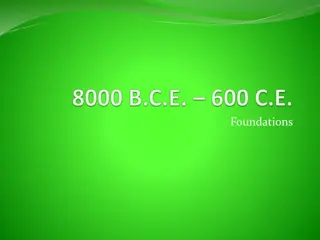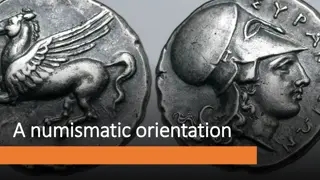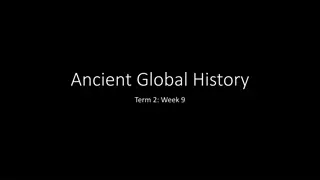Evolution of Money: From Barter to Coins in Ancient Civilizations
In ancient Mesopotamia and China, various commodities like barley, metals, and cowries were used as currencies before the emergence of standardized coinage. Control over the money supply became essential for political authority, leading to the minting of coins. The surplus production in societies allowed for the development of urban settlements, paving the way for specialization of labor and the establishment of economic systems based on trade and taxation.
Download Presentation

Please find below an Image/Link to download the presentation.
The content on the website is provided AS IS for your information and personal use only. It may not be sold, licensed, or shared on other websites without obtaining consent from the author.If you encounter any issues during the download, it is possible that the publisher has removed the file from their server.
You are allowed to download the files provided on this website for personal or commercial use, subject to the condition that they are used lawfully. All files are the property of their respective owners.
The content on the website is provided AS IS for your information and personal use only. It may not be sold, licensed, or shared on other websites without obtaining consent from the author.
E N D
Presentation Transcript
Finance in History Prof. PV Viswanath September 2022 Finance and Society
Early currencies In early Mesopotamia (2200 BCE), barley, lead, copper, bronze, tin, silver and gold were used as currencies, i.e. as standards of value, stores of value and as a means of payment. They were used for the payment of tangible commodities or for non-tangible commodities, such as taxes, repayment of loans with interest, fines etcetera). Barley, lead and copper/bronze functioned as cheaper monies, while tin was mid- range and silver and gold were high-range monies. Occasionally other things, such as cows, sheep, asses, slaves, household utensils and other objects were also used as money. Grain as money makes sense in agricultural economies. Why might it not be used? According to Powell (1996), in northern Mesopotomia (Assyria), rainfall was unpredictable and hence the price of grains fluctuated, leading to a need for a more stable currency in the form of metal. Coins are obvious, but how do we know that a commodity in an archaeological find is money? The Sumerian sign for shekel (a weight), gin, is also used for axes. Axes hordes are found everywhere, which suggests that axes must have been used as money, as well. Similarly, the Chinese symbol for money is a shell: in reformed characters, )
Cowries and coins Silver and gold as money makes sense because they have intrinsic value. But in ancient China, (at least 1200 BCE), cowries were used as money. Since they have little intrinsic value, they were probably used as part of a symbolic system of value. They were replaced later on by coinage. Coins begin to be found around the same time (sixth century BCE) in Greece and in China, and a bit later, in India. Coins are also symbolic, but they have some advantages over cowries. It is possible to standardize their value and thus to have coins of different denominations and values. Their supply can be controlled by the issuer, who can also obtain seignorage. As such, coins imply political authority, which is not necessary for other forms of money. They also require knowledge of how to melt and cast metals. Q: Why might it be valuable to control the supply of money?
Finance and Urbanism Once human activities were able to produce a surplus, above and beyond what was necessary for subsistence, it was possible to set aside resources from one period to another period, perhaps in the form of excess grain. This may have allowed individuals to use some of their excess time to create tools to improve production of grain (perhaps, primitive plows) or improve fishing technology (nets) and higher quality manufactured goods such as clothing for one s own use. The time available over and above what was needed for subsistence could then be used to produce other manufactured goods, such as shoes and clothing, to be used in exchange. This would lead to specialization of labor. The advantages from such trading could then lead to the establishment of settlements such as small towns. In time, such settlements might have grown larger and become cities. Simultaneously, chiefs who wielded political authority may have arisen to create stability and to organize activity in the settlement and its hinterland. They would have financed their services through demands for taxes, which may have been enforced by the use of military power. There may also have arisen a form of collective insurance, in the form of redistribution of wealth, as needed.
Urbanism in Mesopotamia In Mesopotamia, we see a redistributive economy, with the temple at the center. Individuals were required to contribute specified amounts of barley to the temple probably at every harvest. When they were not able to do so immediately, the obligations were, apparently recorded on clay tablets. The oldest known credit obligations are lists of individuals and the amount of barley they owe to the temple. One of these lists from the early twenty- fourth century BCE reads like a narration of the worshippers on the Warka Vase (in the temple district of Uruk in Mesopotamia) naming the supplicants and the amount they are expected to supply to the temple: Lugid, the man of the levy, 864 liters of barley, Kidu, the man from Bagara, 720 liters of barley, Igizi, the blacksmith, 720 liters of barley and so forth. Thus, with the birth of an economy based on central planning and redistribution came indebtedness and taxes.
The uses of debt in ancient Mesopotamia Debt allowed borrowers to use money from the future to meet obligations in the present. For example, suppose a farmer suddenly discovered that his or her store of food had spoiled and the harvest was a month away. Without lending and interest, the farmer would have to starve for a month, or depend on the vagaries of charity. However, debt allows the farmer to smooth consumption between the present and the future. In this sense it substitutes for the spoiled grain it has the effect of moving the future harvest to the present. Smoothing of consumption is only one possible use for a loan. In fact, the technology of borrowing and lending in ancient Mesopotamia depended on the economic system that prevailed at the time. For example, in settings in which the temple or the ruler demanded tax payments, personal loans might have been used to cover a shortfall. In other settings, such as the acquisition of goods and trade, lending in Mesopotamia was part of a complex chain of intermediaries and played a key role in the supply of goods. This can be seen in the records of a certain Turan-ili in Ur (2042-2031 BCE) who seems to have provided mercantile credit.
Examples of debt in early times We see already in ancient China, that debt was used for the purpose of financing war. The text called Guanzi from the 4thcentury BCE talks about the financial dealings of Guan Zhong, who financed the defense of the state of Qi by a surtax on the populace, who in turn raised money by borrowing from wealthy nobles. After the way, Guan Zhong convinced his nobles to forgive the loans. The problem of extreme indebtedness can be seen in other texts, as well, such as the Jewish Bible (Deuteronomy). 1 At the end of seven years you will make a release. 2 And this is the manner of the release; to release the hand of every creditor from what he lent his friend; he shall not exact from his friend or his brother, because time of the release for the Lord has arrived. There is evidence of debt cancellation in Mesopotamia as far back as 2400 BC, in the city of Lagash (Sumer). The most recent instance dates back to 1400 B.C. in Nuzi. In all, historians have identified with certainty about thirty general debt cancellations in Mesopotamia from 2400 to 1400 BC.
Recording of debt contracts In Mesopotamia, IOUs were recorded on baked clay tablets. In China, bamboo tally sticks were used: A text would be written on the smooth outer surface of a large piece of bamboo, and then this was split in two, parallel to the grain. The two parts were then able to be uniquely matched against each other when the loan was either paid or disputed. Thus, whether it was clay or bamboo, financiers developed a verification technology for financial contracting using the natural resources at hand. The English word, tally, meaning calculate comes from the tally stick. Tally sticks, circa 1299, showing accounts of the bailiff of Ralph de Manton of Ufford Church, Northampton
Recording of debt contracts Loans were, no doubt, made even before the advent of cities. However, when individuals lived next to each other and knew each other, loans may have been made as part of a mutual support system and may well have not borne interest. Loans may have been made in money, but perhaps also in kind, such as grain loans to tide over one s neighbor. However, with the advent of cities where large numbers of individuals lived and there was a certain amount of impersonality, it became necessary to record loans and not depend upon reciprocity. While urbanization required such formalized loans, they, in turn, may have facilitated trade and exchange and encouraged the development of cities and even greater efficiencies in production and exchange.
Bibliography Powell, Marvin. 1996. Money in Mesopotamia, Journal of the Economic and Social History of the Orient, vol. 39, no. 3, pp. 224-242.
